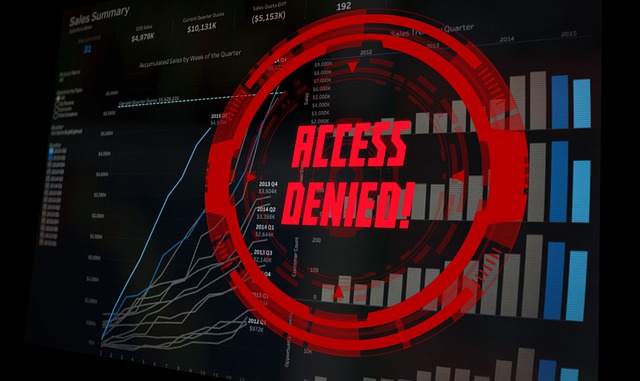Access logs and robust business access control solutions are vital for organizations prioritizing security compliance. These tools meticulously document user activities, providing critical audit trails for security teams to monitor, track, and ensure adherence to access policies. By integrating these solutions with advanced technologies like MFA and RBAC, organizations can maintain secure environments, detect unauthorized access, and enable proactive risk management. Regular log reviews, automated reporting, customizable alerts, and employee training further strengthen security compliance and foster transparency.
In today’s digital landscape, access logs and audit trails are indispensable tools for achieving security compliance. Understanding these records provides the foundation for robust security measures, enabling organizations to track user activities and ensure data integrity. This article explores key aspects, from deciphering access logs to implementing powerful business access control solutions for comprehensive protection. We delve into best practices for monitoring and reporting, equipping professionals with strategies to maintain a secure environment.
Understanding Access Logs: The Foundation of Security Compliance
Access logs are a crucial component of any comprehensive security compliance strategy. They serve as a detailed record of who accessed what, when, and how within an organization’s digital infrastructure. These logs provide an invaluable audit trail, allowing security teams to monitor and track user activities, identify potential risks, and ensure adherence to defined access control policies. By implementing robust business access control solutions, organizations can harness the power of access logs to maintain a secure environment.
Each interaction recorded in these logs offers insights into user behavior, system activity, and potential vulnerabilities. They are designed to capture critical events such as login attempts, data access, changes made to configurations, and system shutdowns. Analyzing this data enables security professionals to detect unauthorized access, suspicious activities, or policy violations. Moreover, access logs play a pivotal role in forensic investigations, helping to pinpoint the origin of cyberattacks and mitigating future risks through informed decision-making.
Audit Trails: Unraveling the Details for Comprehensive Analysis
Audit trails are a critical component of any robust security compliance strategy, offering a detailed record of user activities within an organization’s digital infrastructure. These logs provide a timeline of events, capturing every access attempt and successful or unsuccessful login. By meticulously analyzing these trails, security professionals can uncover potential vulnerabilities, unauthorized access, or malicious activity. Each entry in the audit trail includes valuable metadata, such as timestamps, user identities, IP addresses, and system actions, enabling comprehensive analysis.
For effective risk management, business access control solutions integrate seamlessly with audit trails, ensuring every action is tracked and correlated. This enables security teams to quickly identify anomalies, trace activities back to their source, and implement targeted measures to fortify defenses. With detailed audit logs, organizations can maintain regulatory compliance, protect sensitive data, and foster a culture of accountability and transparency.
Implementing Business Access Control Solutions for Enhanced Security
Implementing robust business access control solutions is a pivotal step in fortifying an organization’s security posture and ensuring compliance with stringent industry regulations. These solutions serve as a bulwark against unauthorized access, protecting sensitive data and critical systems from potential threats. By employing sophisticated technologies like multi-factor authentication (MFA), role-based access controls (RBAC), and continuous monitoring, organizations can intricately manage user permissions, limiting access to only those who require it for their specific roles.
This proactive approach not only safeguards against malicious activities but also helps in identifying and mitigating potential security gaps. Business access control solutions enable organizations to maintain detailed audit trails, providing a clear record of user activities, changes in permissions, and system logs. This transparency is invaluable for conducting thorough audits, investigating security incidents, and demonstrating regulatory compliance, thereby fostering an environment of trust and accountability.
Best Practices for Effective Monitoring and Reporting
Implementing robust best practices for monitoring and reporting is crucial for maintaining effective security compliance through access logs and audit trails. Organizations should establish comprehensive logging policies that record all user activities, including access attempts, permissions granted, and any modifications made to sensitive data or systems. This includes leveraging advanced business access control solutions that provide detailed insights into who accessed what, when, and how. Regularly reviewing these logs for anomalies or unauthorized access attempts is essential to identify potential security breaches promptly.
For efficient reporting, automated dashboard tools can aggregate and visualize key metrics, making it easier for security teams to detect trends and patterns. Customizable alerts based on predefined rules help in real-time response to suspicious activities. Additionally, maintaining a centralized repository for audit trails ensures consistency and simplifies the process of tracking changes over time. Regular training and awareness programs for employees regarding data protection protocols further reinforce the importance of responsible access management practices.
Access logs and audit trails are essential tools in ensuring security compliance, providing a comprehensive view of system access. By understanding these logs and implementing robust business access control solutions, organizations can effectively monitor and manage user activities. Regular review of audit trails allows for the identification of potential risks and non-compliance issues, enabling proactive measures to fortify security. Adhering to best practices in monitoring and reporting further enhances the ability to maintain a secure digital environment.
